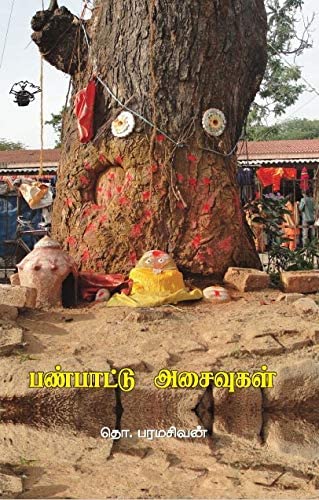doomreader reviewed Panpattu Asaivukal by T. Paramasivan
Accessible cultural history
5 stars
Did you know that before chilli came to Tamil Nadu from Chile in the 15th century, Tamils used black pepper? கருமிளகு was called curry (கறி) and later came to mean meat because it was more often used to make meat spicy. Tho. Paramasivan's பண்பாட்டு அசைவுகள் is filled with such fascinating nuggets of history and more.
This is a book of short, riveting essays digging into the origins of various aspects of Tamil culture and everything that has to do with it. It's two short books published as one, அறியப்படாத தமிழகம் & தெய்வங்களும் சமூக மரபுகளும். It's a steal.
'Tho.Pa.', as he is called, has us spellbound with his erudition and insight. The first book, with shorter pieces, is filled with mind-blowing factoids, etymologies, anecdotes, interesting quotes, etc. He touches everything from salt and water, caste and weddings, language and rituals, farming and folklore, laws and beliefs, festivals and kings, and many more topics.
You can see why the author is revered and why பண்பாட்டு அசைவுகள் is a blockbuster. He uses archaeological findings, anthropological studies, ancient Tamil literature, history books, scholarly works, and other sources to explain the rise and fall of Buddhism and Jainism, native, 'naattaar' deities, the advent of Brahminism, Islam and Christianity, exchanges with ancient cultures, the bhakti movement and its religious-political origins and so on. He writes in a simple, mostly accessible language.
That said, sometimes he does use archaic phrases and terms straight out of some old Tamil verse without explanation, leaving us scratching our heads.
The second part, தெய்வங்களும் சமூக மரபுகளும், also brilliant, is less accessible and more scholarly, still containing a couple of important essays for the general reader, such as the one on the history of Brahmins in Tamil Nadu and another on the historic entry of Dalits into Madurai Meenakshi temple. Some essays quote more than a dozen lines of verses.
The author almost seems to try to paint a rosy picture of ancient Tamil Nadu, a Garden of Eden before Lucifer. Some of his explanations might be a stretch, such as the one about how the word தம்பி could have been derived from தம் பின் (தமக்குப் பின்). Though a Periyarist, he describes in a matter of fact manner the siddhars as saints who performed alchemy, shape-shifting, walking on water and other miracles. Just a few lines here and there in an otherwise brillant, landmark book. It makes you want to go deeper into the topics discussed here and look at things you take for granted in a different light.

